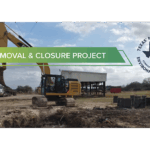
Environmental compliance auditing plays a crucial role in ensuring that businesses and organizations in Killeen adhere to local and federal environmental regulations. By conducting comprehensive and regular audits, both the public and private sectors are able to assess their environmental performance, identify areas of improvement, and implement measures to minimize their ecological impact. In this article, we will explore the definition and importance of environmental compliance auditing, its key elements, and the role it plays in Killeen, Texas.
Understanding Environmental Compliance Auditing
Environmental compliance auditing refers to the systematic and independent assessment of an organization’s compliance with environmental laws, regulations, and standards. It involves evaluating a broad range of factors, including waste management, pollution control, resource conservation, and workplace safety initiatives. The primary objective of compliance auditing is to ensure that businesses operate in an environmentally responsible manner, minimizing their negative impact on ecosystems and human health.
Definition and Importance of Environmental Compliance Auditing
Environmental compliance auditing involves the rigorous examination of an organization’s practices, processes, and policies to ensure they align with local, state, and federal regulations. Auditing helps identify potential non-compliance issues, assesses the effectiveness of existing environmental management systems, and provides recommendations for improvement.
Compliance auditing is essential for several reasons. First, it helps protect the environment by ensuring that organizations meet legal requirements regarding emissions, waste disposal, and resource conservation. Second, it enhances transparency and accountability, as companies must demonstrate their commitment to sustainability and environmental stewardship. Finally, compliance auditing can safeguard public health by minimizing the release of pollutants and contaminants into the air, water, and soil.
Key Elements of Environmental Compliance Auditing
Effective environmental compliance auditing involves several key elements, including:
- Establishing audit objectives and scope: Clearly defining the purpose and boundaries of the audit.
- Gathering information and documentation: Collecting relevant data, records, and reports related to the organization’s environmental practices.
- Conducting on-site inspections: Assessing the physical infrastructure, equipment, and processes in order to identify any potential compliance gaps or areas of improvement.
- Interviewing employees: Engaging with staff members to gain insight into their roles, responsibilities, and knowledge of environmental compliance procedures.
- Reviewing policies and procedures: Evaluating the organization’s environmental management system, including policies, procedures, and protocols that govern their operations.
- Analyzing data: Examining various environmental performance metrics, such as waste generation, energy consumption, and emissions, to assess compliance with legal requirements.
- Preparing audit reports: Documenting audit findings, highlighting areas of non-compliance, and providing recommendations for corrective actions.
- Monitoring and follow-up: Tracking the implementation of recommendations and conducting regular audits to ensure ongoing compliance.
The Role of Environmental Compliance Auditing in Killeen
Killeen, Texas, like many other cities, recognizes the importance of environmental compliance auditing in promoting sustainable development and protecting natural resources. By setting and enforcing local regulations, Killeen enhances its resilience to environmental challenges, while also supporting the growth of environmentally responsible businesses.
Local Environmental Regulations in Killeen
Killeen has established a comprehensive set of environmental regulations to safeguard its air, water, and land resources. These regulations cover a wide range of areas, including air pollution control, water management, waste management, and hazardous materials handling. To ensure compliance, businesses operating in Killeen are required to obtain the necessary permits, monitor their environmental performance, and regularly report their activities to the appropriate regulatory authorities.
Impact of Environmental Compliance on Killeen’s Economy
While environmental compliance may seem like a burden for businesses, it also presents significant economic opportunities for Killeen. By complying with environmental regulations, organizations can improve their efficiency, reduce waste, and minimize the risk of legal penalties. Embracing sustainable practices also enhances their reputation and provides a competitive advantage in an increasingly environmentally conscious market. Moreover, compliance auditing creates jobs in fields such as environmental consulting, monitoring, and remediation, contributing to the local economy’s growth.
The Process of Environmental Compliance Auditing
Environmental compliance auditing is a multi-step process that involves various activities before, during, and after the audit itself.
Pre-Audit Activities
Prior to conducting an audit, thorough preparation is essential. This includes:
- Evaluating the organization’s compliance history and identifying potential areas of concern.
- Determining the scope and objectives of the audit, based on relevant regulations and the organization’s operations.
- Developing an audit plan, including a timeline, resource allocation, and audit team composition.
- Organizing and reviewing documentation related to the organization’s environmental practices and compliance records.
- Informing key personnel about the upcoming audit and ensuring their cooperation throughout the process.
Conducting the Audit
During the audit, auditors follow a systematic approach to assess the organization’s compliance with environmental regulations. This typically involves:
- Site visits and inspections to verify compliance with infrastructure, equipment, and operational requirements.
- Interviews with employees at various levels of the organization to gain insights into their environmental responsibilities and understanding of compliance measures.
- Sampling and analysis of key environmental parameters to evaluate the organization’s compliance with pollutant standards.
- Reviewing records, reports, and documentation to ensure accurate reporting and adequate record-keeping.
Post-Audit Activities
After completing the main audit activities, auditors compile their findings into a comprehensive report. This report typically includes:
- A summary of the audit objectives, scope, and methodology.
- A detailed description of the audit findings, including instances of non-compliance and areas of improvement.
- Recommendations for corrective actions to address non-compliance and improve environmental performance.
- A timeline for implementing the recommended actions and a plan for monitoring and follow-up audits.
Challenges in Environmental Compliance Auditing
Environmental compliance auditing is not without its challenges. Auditors often face obstacles that can impede the effectiveness and efficiency of the auditing process. By recognizing and addressing these challenges, auditors can overcome them and ensure the integrity of their assessments.
Common Obstacles in Compliance Auditing
Some common challenges in environmental compliance auditing include:
- Lack of awareness: Organizations may not fully understand the importance of compliance or the potential consequences of non-compliance.
- Complexity of regulations: Environmental regulations can be complex, requiring specialized knowledge and expertise to interpret and apply correctly.
- Resource constraints: Limited budgets, staffing, and technical capabilities can hinder the effectiveness of compliance auditing efforts.
- Resistance to change: Some stakeholders may be resistant to implementing new practices or investing in environmentally friendly technologies.
- Changing regulatory landscape: As regulations evolve over time, auditors must stay informed and adapt their auditing procedures accordingly.
Overcoming Auditing Challenges
To overcome these challenges, auditors can adopt the following strategies:
- Enhance communication and education: Raise awareness about the importance of environmental compliance and provide resources to support organizations in their compliance efforts.
- Stay informed and updated: Keep abreast of evolving regulations and industry best practices to ensure accurate compliance assessments.
- Collaborate with stakeholders: Engage with organizations, regulatory agencies, and industry associations to foster collaboration and share knowledge.
- Invest in technology: Leverage technological advancements, such as data analytics and remote sensing, to streamline auditing processes and improve data accuracy.
- Encourage proactive compliance: Emphasize the benefits of proactive compliance, such as cost savings and reputation enhancement, to incentivize organizations to go beyond minimum requirements.
Future of Environmental Compliance Auditing in Killeen
The field of environmental compliance auditing is constantly evolving, driven by advancements in technology and changes in societal expectations.
Emerging Trends in Environmental Auditing
Emerging trends in environmental compliance auditing include:
- Big data analytics: The use of advanced data analysis techniques to identify trends, patterns, and potential compliance risks.
- Remote sensing and satellite imagery: Utilizing satellite data to monitor environmental indicators, such as air and water quality, on a large scale.
- Blockchain technology: Employing blockchain to ensure the transparency, traceability, and integrity of environmental compliance data.
- Life cycle assessments: Adopting a holistic approach to assess the environmental impact of products and processes throughout their entire life cycle.
The Role of Technology in Compliance Auditing
Technology plays a pivotal role in enhancing the efficiency and effectiveness of compliance auditing. By leveraging technology, auditors can automate data collection, analyze large volumes of information, and detect potential compliance issues more accurately. Additionally, technology enables real-time monitoring of environmental performance, allowing organizations to identify and address non-compliance promptly.
In conclusion, environmental compliance auditing is a critical component of sustainable development in Killeen. By ensuring that businesses comply with local environmental regulations, audit activities protect the environment, promote accountability, and support the growth of a green economy. As the field evolves, embracing emerging trends and leveraging technological advancements will further enhance the effectiveness of environmental compliance auditing in Killeen, Texas, and beyond.
As Killeen continues to grow and evolve, the need for comprehensive environmental compliance auditing becomes ever more critical. If your business is seeking to navigate the complexities of environmental regulations and embrace sustainable practices, ESE Partners is here to guide you. Our team of skilled environmental engineers and scientists are dedicated to responsibly moving your business forward with innovative solutions to environmental challenges. From due diligence and remediation to compliance and natural resources, we offer the expertise to ensure your operations not only meet but exceed environmental standards. Don’t let compliance concerns hold you back. Request A Proposal today and partner with ESE Partners for a greener, more sustainable future.








